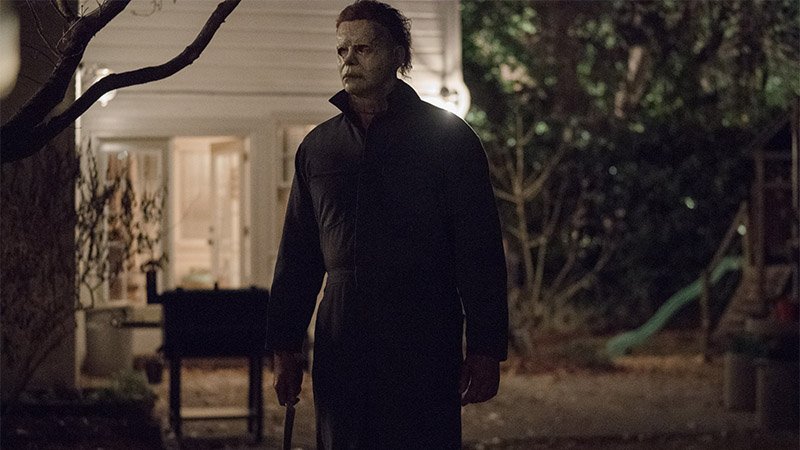Halloween: Trauma and White Male Rage
In the horror world there isn’t always realistic elements that can be applied to social issues that we’re still facing in today’s times. And let’s face it – not everyone watches movies to examine themselves or anything for that matter. For myself, I can’t help but search for subtextual meanings and write or think of some of my own meta about what I’m absorbing.
With Halloween (2018) I wasn’t exactly expecting to think deeply and initially was more concerned if it’d be a quality film, not if I would analyze the movie. The original film had a slight message but it wasn’t overt and mainly focused on the eerie nature of Michael Myers as a serial killer. Whereas this sequel, taking place in current time, has some more obvious deeper meanings, observed or not.
Rather than have Laurie Strode (Jamie Lee Curtis) be a regular and functioning adult – she’s riddled with trauma. Which is to be expected due to what she went through 40 years prior. But her trauma causes her to have a very strained relationship with her daughter, Karen (Judy Greer). Despite this, Laurie manages to have a relationship with her granddaughter, Allyson (Andi Matichak), who is more compassionate with Laurie compared to everyone else.
In the film, Laurie is well-versed with weapons (guns in particular), learned combat training and has her whole house prepared for the day Michael Myers (Nick Castle Jr.) escapes from the insane asylum he’s been in. Almost everyone around her thinks she’s batshit and paranoid. The reality is is that it’s natural for someone who’s been through what Laurie has endured to become paranoid due to her trauma and for it to deeply impact her adulthood. Her paranoia wound up being more rational than people even realized, since Michael ended up escaping the bus that was transferring him from one facility to another.
Jamie Lee Curtis and Judy Greer in Halloween (2018)
Post-escape, Michael unleashes terror on Haddonfield yet again by going on a killing spree. His killing spree is brutal and violent. His most random and stress-inducing kills were women, which may or may not have been intentional, but it’s still classic slasher M.O. Michael’s brutality doesn’t waver in this film, instead it is portrayed more vicious, nor does his obsession with killing Laurie. His eerie fixation with our Final Girl is a reminder of what she doesn’t think she’ll ever escape: her trauma and history. Michael is a physical reminder, as well as the cause, of what’s shattered her life in the first place. Michael’s rage represents that of stereotypical white male rage that exists in our reality.
We watch him casually terrorize and brutally kill women that get in his way or simply because he wants to kill. One could say in a subtextual way that he kills primarily women due to Laurie not becoming his victim all those years ago, despite him being a serial killer in general. And while the film isn’t exactly wrapped in a bow that said “this is a feminist film” – it’s very much about a woman taking back her power and multiple generations of women coming together to kick his ass (aka kill him) for good. Rather than cowering to Michael and allowing him to kill her loved ones, Laurie faces her trauma physically and mentally and fights back.
To me, it’s important to watch this film with a feminist lens and to consider taking in the deeper message it provides us with. Especially if you’re a survivor of trauma.
Follow Vanessa Maki on Instagram and Twitter @theblackbuffy.

